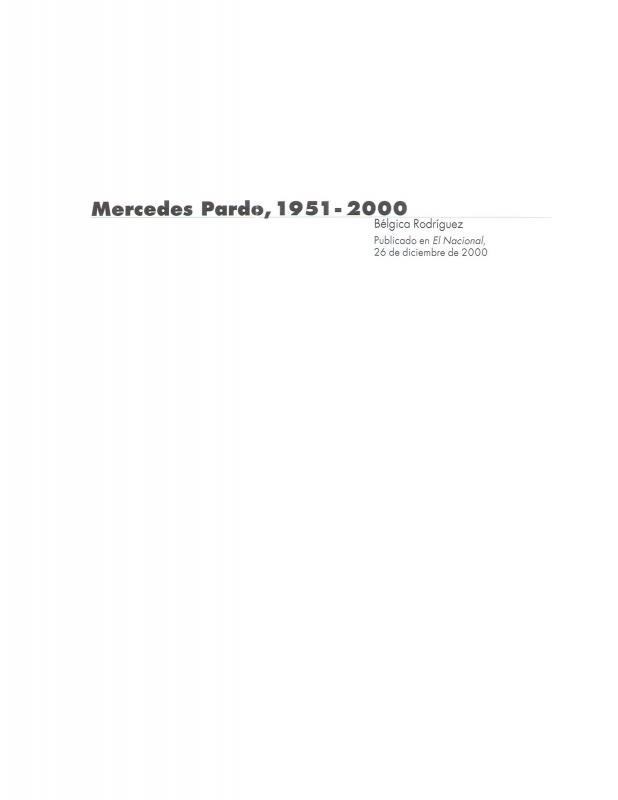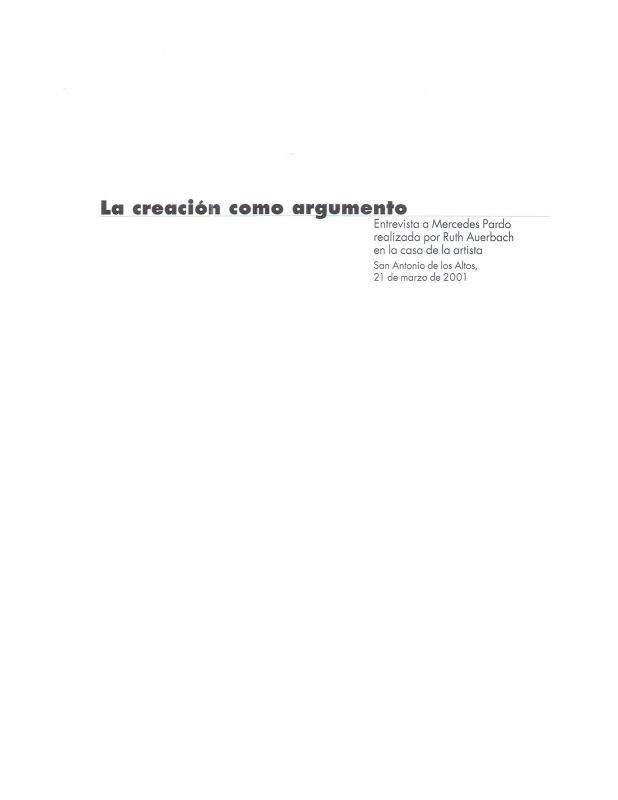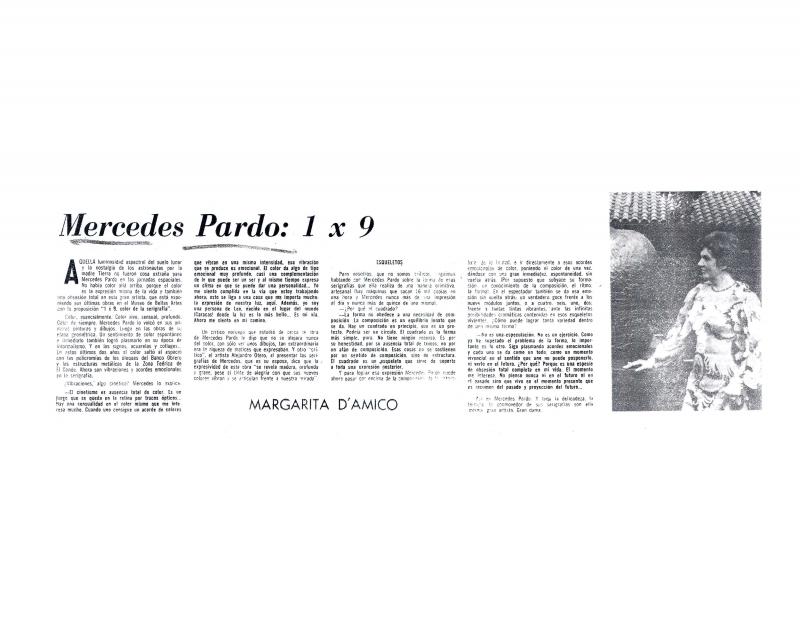The Venezuelan writer and playwright Elizabeth Schon (1921–2007) was not only an outstanding intellectual and one of the great poets of the country, but she was also a critic of the visual arts. She shared a friendship with contemporaries such as Elsa Gramcko, Luisa Palacios, and Mercedes Pardo (1921–2005), among other artists, whose careers commenced in the 1940s, strengthening the female presence in the Venezuelan art scene and who today are considered among the great Venezuelan masters of the twentieth century.
This essay by Elizabeth Schon is valued today for presenting a sensitive poetic approach to Pardo’s work and for a greater understanding of her career at different stages. With the exception of projecting an attempted chronology (often with limitations, when taking all into account), it is approached with flexibility and without scholarly pretensions; on the contrary, these stages are an excellent focal guide that encompasses her formal and symbolic values, as well as the possibilities of color. An example of this is the analysis of circular forms in one of her figurative works (Calas) and in the first abstract work. Schon’s essay provides us with a metaphorical space rich in ways of expressing contrasts and chromatic hues, presented, even to the spectator, as venues into other perceptual and emotional experiences through a visual rather than an analytical sense.
Of great interest is Elizabeth Schon’s emphasizing Pardo’s “informal” phase, given the preeminence of her extraordinary use of color and large shapes, thus questioning her reputation as the great Venezuelan art colorist, which in her opinion places aside other important aspects.
[For additional information on the artist, see in the ICAA digital archive the critical essay by Bélgica Rodríguez (2001) “Mercedes Pardo: 1951–2000” (doc. no. 1143027). For other texts on her work, see the interview by Ruth Auerbach “La creación como argumento” (doc. no. 1143060) and the one by Margarita D’Amico, “Mercedes Pardo: 1 x 9” (doc. no. 1155959); the text by Roberto Guevara “Color y módulos en Mercedes Pardo” (doc. no. 115991); and the essay by María Fernanda Palacios on the painter, “Pintura y vida” (doc. no. 1102253)].




